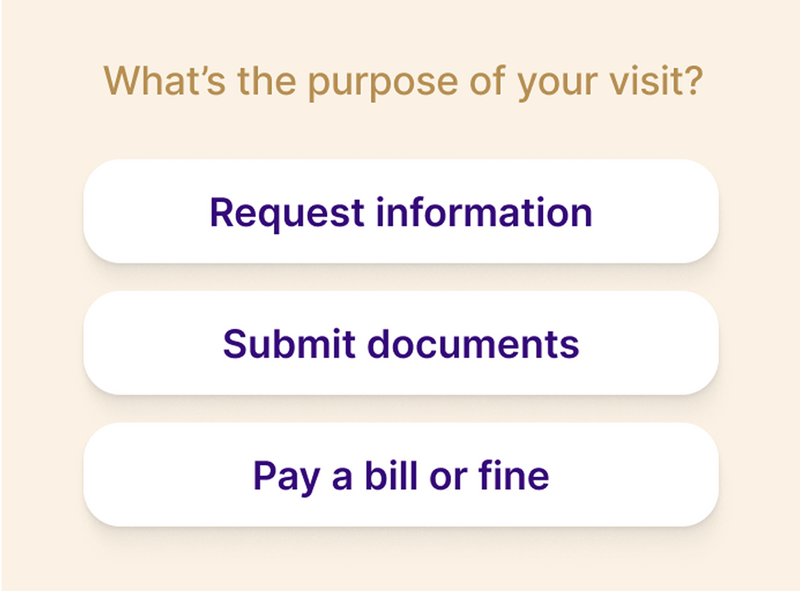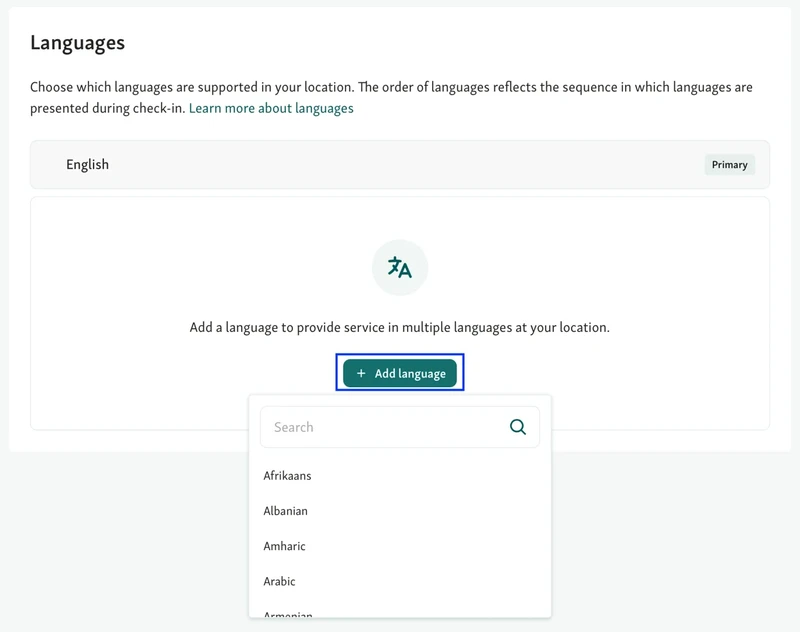Renewing a driver's license or getting a permit shouldn't waste hours of your life in lines. Self-service kiosks solve this mess.
DMVs and government offices deploy these digital stations to revolutionize basic services. People check in solo, upload documents, pay fees without help. DMV self-service kiosks crush wait times while staff tackles complex issues needing actual expertise.
The benefits of self-service kiosks go way beyond saving time, efficiency jumps, errors drop, and satisfaction goes up.
In this blog we’ll look at how modern kiosks kill bottlenecks, destroy queues, and deliver permit and renewal services that actually respect people's time and sanity.
How Self-Service Kiosks Help Reduce Wait Times
Self-service kiosks are changing how government offices and DMVs handle daily operations. Here’s how they make it happen step by step:
1. Streamline Check-In and Registration
One of the biggest benefits of self-service kiosks is their ability to revolutionize visitor check-ins. People register themselves in seconds instead of waiting for staff to type details manually. This automation crushes wait times, clears congestion, and routes every visitor to the correct service counter immediately.

Key advantages:
Lightning-fast automated registration
Front desks stay clear and organized
Precise routing to service categories
Example: At a DMV self-service kiosk, someone renewing their license checks in, confirms details, and gets a virtual ticket instantly, no line required.
2. Enable 24/7 DMV Self-Service Options
Modern DMV self-service kiosks deliver key services around the clock. This flexibility slashes wait times by spreading demand throughout the day and night, killing peak-hour bottlenecks. Citizens stop planning their lives around office hours, renewals, registrations, and payments happen whenever it works for them.
Key advantages:
DMV services available 24/7
Opening hours see fewer crowds
Busy people get services on their schedule
Example: A driver goes up to a self-service kiosk at 10 PM to renew vehicle registration at a DMV branch or public location, zero waiting, zero lines.
3. Automate Routine Transactions
Another major benefit of self-service kiosks? Total automation. Fee payments, license renewals, address changes, all happen without staff touching anything. Manual workload drops and wait times shrink for everyone. Kiosks handle the repetitive stuff while staff tackles complex problems requiring human judgment, speed and efficiency both win.
Key advantages:
Routine DMV and permit tasks run automatically
Staff focuses on high-value assistance
Service flow improves, errors disappear
Example: Citizens hit a DMV self-service kiosk to renew licenses or pay fees without waiting for counter clerks, slashing average visit times to minutes.
4. Improve Queue Distribution with Real-Time Data
Self-service kiosks process transactions while feeding critical data into queue management systems. Offices monitor live visitor flow, spot bottlenecks instantly, and shift staffing on the fly. Data-driven insights help agencies slash wait times and keep service steady all day, even when crowds surge.
Key advantages:
Connects with queue management software for live tracking
Staff allocation adjusts to real-time demand
Peak-hour queues never spiral out of control
Example: Busy DMVs use self-service kiosk data to spot mid-morning registration spikes, immediately deploying extra agents to those desks.
5. Minimize Errors in Data Entry
An overlooked benefit of self-service kiosks is that the accuracy skyrockets. Visitors type their own details digitally, so transcription and data entry mistakes practically vanish. No more backlogs, rework, or follow-ups clogging the entire system. Clean submissions keep everything moving, cutting wait times and delivering better service quality.
Key advantages:
Error-free form submissions become standard
Rework and correction delays get eliminated
Approval and processing accelerate
Example: DMV self-service kiosk users verify personal and vehicle details before hitting submit, killing the manual errors that traditionally delay renewals or permit approvals.
6. Support Contactless and Faster Payments
Modern self-service kiosks pack secure payment systems for permits, licenses, and renewals. Visitors pay by card, mobile wallet, or contactless tap, transactions done in seconds. This slashes wait times while eliminating counter-hopping or cash handling. Everyone gets a smoother, safer experience.
Key advantages:
Instant cash-free payments happen
Renewal and fee transactions take seconds
Hygiene and convenience both improve
Example: DMV self-service kiosk users renew registration and pay fees with tap-to-pay cards in under two minutes, bypassing cashier lines completely.
7. Provide Real-Time Status Updates
Self-service kiosks keep visitors informed throughout their entire journey. Once transactions start, users watch live progress on-screen or get SMS updates about their queue position. This transparency manages expectations and crushes perceived wait times, people relax when they know exactly what's happening.
Key advantages:
Live service updates display on kiosks or phones
Perceived waiting drops along with frustration
Transparent communication builds trust
Example: DMV self-service kiosk users renewing licenses see their exact queue position and estimated completion time, eliminating the uncertainty that triggers complaints.
You might also like - How to Choose the Best Self Check-in Kiosk for Government Departments
Implementing Self-Service Kiosks Successfully
Follow these clear steps to roll out self-service kiosks effectively and make them a true solution to reduce wait times in your office.
Step 1: Identify high-traffic services
Attack the services buried under visitors, renewals, payments, registrations. Automate these first for maximum wait time reduction.
Step 2: Train your staff
Get employees fluent in kiosk operations before going live. They're your frontline helping citizens navigate and troubleshooting glitches.
Step 3: Design for accessibility
Make kiosks usable by anyone. Big buttons, readable text, audio assistance accommodate all ability levels.
Step 4: Add multilingual support
DMV self-service kiosks need your community's languages loaded. Multiple language options eliminate confusion and speed everything up.

Step 5: Monitor and improve
Watch usage data, gather complaints, tweak constantly. Ongoing refinements keep efficiency high and maximize the benefits of self-service kiosks forever.
Also read - What Are Self Check-in Kiosks and How Can They Improve Service Efficiency in Local Government?
Turning Self-Service into Shorter Waits
The benefits of self-service kiosks reach beyond basic convenience, government offices and DMVs use them to annihilate wait times, turbocharge efficiency, and deliver experiences that citizens and staff actually appreciate. Automated check-ins, payments, and renewals let employees focus on complex cases needing human expertise.
Amplify kiosk impact by connecting them to intelligent queue management platforms like Qminder. The integration flows naturally with self-service kiosks, supplying real-time data, queue intelligence, and visitor flow control that actually works.
Book a free Qminder demo today and revolutionize how your office handles visitors.
Modern self-service kiosks revolutionize manual processes. Built-in scanners and cameras now verify IDs, capture digital signatures, and upload documents securely - eliminating time-consuming manual checks.
Kiosk analytics provide real-time insights. They track transaction times, usage patterns, and service bottlenecks automatically. Offices can now measure efficiency, identify trends, and continuously reduce wait times with precise data.
Small offices especially benefit from these kiosks. By automating repetitive tasks like payments and renewals, staff pressure drops while visitor satisfaction climbs. The infrastructure costs remain minimal, making it a smart operational upgrade.






